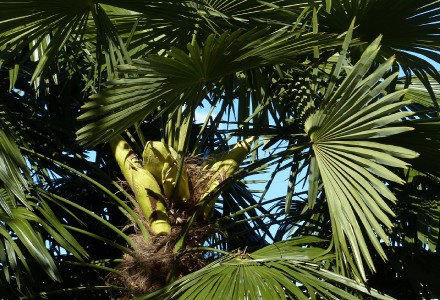
Phoenix Plant Facts
- Phoenix Plant forms the collective name of any of the amazing plants within a single genus. In total, this group consists of 14 species of palms. Each of these truly fascinating flora evolved as native to diverse regions and climates of the world.
- These have a distinctive physical trait in common. Among the larger species, the leaves of some species attain enormous sizes. That holds true due to the fact that these grow to as long as 19.5 ft (6 m). Some also grow well in a wide variety of soil types.
- Sadly, each of the species collectively known as the Phoenix Plant also has an unfortunate trait in common. Various factors indicate that the different members of this genus all appear to have been far more numerous in the past than now.
- For now, none of the members of the group appear on the Red List of Threatened Species, published by the IUCN. Yet, these wonders of nature presently face many threats. The primary threats to the genus consist of climate change and habitat loss.
Related Articles
Traveller’s Palm Cretan Date Palm Peach Palm
Phoenix Plant Physical Description
The somewhat surprising Phoenix Plant also possesses yet another trait common to all species holding the name. That particularly distinct characteristic has to do with the blooms each of them produces, since they develop in the same manner.
Regardless of this shared trait, however, the various plants themselves have their own form of beauty, of course. For one thing, the flowers of the many plant, have their own highly distinctive visual appeal. This obviously stems from varying colors and shapes.
Firstly, while these blooms typically remain small, these most commonly develop in surprisingly large clusters. Secondly, in color, these flowers generally present a yellowish-brown and stay rather small. These usually average about 0.4 in (1 cm) in diameter.
The fruits of the varying forms of Phoenix Plant also share some traits. Among these is the fact that this part of the plant usually remains quite small, measuring about 0.4-2.8 in (1-7 cm) in length. The fruit is edible, though, and contains a high sugar content.
Added to this its the fact that most of the leaves appear as either reddish-brown, yellow or dark purple in color when mature. These fabulous plants also has a dioecious nature. Along with this, pollination is managed by both wind and insect activity.
- Kingdom: Plantae
- Phylum: Angiosperms
- Class: Monocots
- Order: Arecales
- Family: Arecaceae
- Genus: Phoenix
Phoenix Plant Distribution, Habitat, and Ecology
Since so many species go by the common name, the various types of the surprising Phoenix Plant inhabit an extremely wide habitat range. This includes one section of the world. That consists of the Canary Islands, parts of Africa, Crete, Turkey, China, and Malaysia.
The habitat types of the remarkable plant actually can be quite varied in nature. That’s due to the fact that these can include swamps, deserts, and mangrove forests. Most varieties grow medium to large in size, though a few known dwarf types also exist.
Most individuals display an incredible adaptation. Specimens usually grow under the shade of more dominant forest trees. The majority appear on slopes, and in warm, humid conditions. In the tropics, the vast majority of individuals occur at lower altitudes.
Finally, the various forms of the Phoenix Plant share one more trait. That pertains to its propagation. Each member of this amazing genus produces flowers and fruits on an annual basis. Reproduction also occurs by both seeds and vegetative shoots or bulbs.
Species Sharing Its Range
Aardwolf Chinese Lantern Crowned Eagle
Check out our other articles on 5 Fabulous European Mammals, Tassled Scorpionfish, Shark Bay, Happy Alien, Marine Iguana, Yosemite Cave Pseudoscorpion, Mountain Chicken

